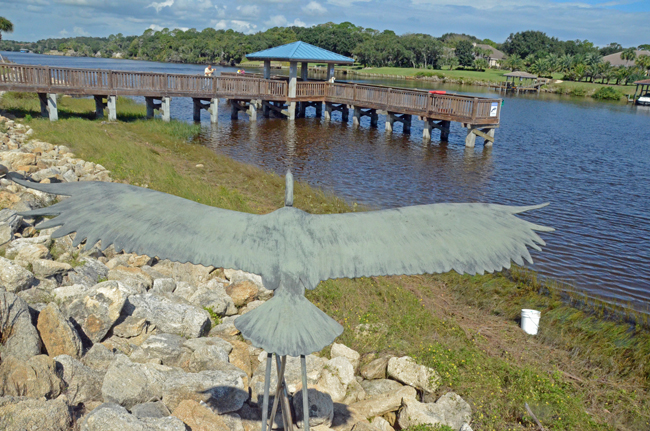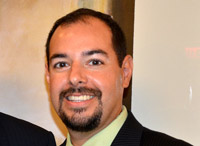
Palm Coast’s park impact fees levied on new construction are about to decline by a few hundred dollars, though the city’s ambitious plans for new parks and recreational facilities over the next few decades are unchanged. It’s not quite a contradiction: population projections are in flux, and so will be the formula that defines how much new residents will pay for park expansions.
It may not look like it at the moment, with development still shaking off the rubble of the housing crash and the recession that followed. But Palm Coast still optimistically sees itself as a city of 200,000 by mid-century—a city almost three times its current size.
Several massive developments, called Developments of Regional Impact, have been approved to that end. Though for the most part the developments show little to no building activity at the moment, four such DRIs alone would add 18,000 homes and swell the population by more than 40,0000. That’s without taking into account the roughly 18,000 buildable lots in the city.
Development brings people. New people have an impact on the city’s make-up and services: people add demands for services. One of those demands is for parks. Florida pioneered the notion of “impact fees,” a one-time tax added to new construction and designed to defray the cost of a growing population’s impact on a community. There are impact fees for roads, for utilities, for fire services, and for parks.
Those impact fees would underwrite the cost of Palm Coast’s big plans for an aquatic center, more athletic fields, more parks, and so on. Palm Coast’s current impact fee for parks is $1,264 for the equivalent of a single-family house. The city calculates that if it were to grow to a population of 200,000, it would generate $132 million in park impact fees. It’s a large sum, but stretched out over several decades, it thins out rapidly.
Community centers would consume $13.9 million of that, parks would consume $80 million, “special use facilities,” such as a swimming pool, would add up to $30.7 million. A portion of those costs will benefit the entire community. That means that portion must be borne by all residents, not just new residents.
For several years, city officials and the building community have been saying that the current formula for park impact fees is unwieldy, and the fee itself is too steep. “We agree the current fee is irrational at best,” Palm Coast Mayor Jon Netts said.
The city studied the matter and on Nov. 5 a unanimous city council (council member Jason DeLorenzo’s hesitant yes vote notwithstanding) approved a new fee schedule that would reduce the current fee 8 percent, to $1,163.
The fee would be more than what some cities of Palm Coast’s size charge in Florida (among them New Smyrna Beach, Leesburg, Winter Haven and Ormond Beach), and less than others (Port Orange, Daytona Beach, Claremont). As the experience of Daytona Beach suggests, higher park impact fees does not necessarily translate into a better-looking city.
“If we’re going to project forward, the people coming in are going to have to pay their fair share. I think that’s only fair,” council member Bill Lewis said, describing a city in need of more parks, not fewer.
The council was to approve a second and final reading of the ordinance on Nov. 19. But Council member Jason DeLorenzo, who is also the political affairs director of the Flagler Home Builders Association—and the most vocal critic of impact fees—blistered the city’s approach and raised several objections to the city’s projections, particularly what he considers the slapdash way the city went about its calculations.

“This funding ordinance validates or defines the park master plan as reality,” DeLorenzo said. “And I wonder if it really is reality. First of all, it’s a planning horizon of around 40 years.” Planning out 40 years doesn’t make for good policy, considering the rapid pace of change, DeLorenzo said, illustrating his point with comparisons between the 1970s and the current decade. “We do lots of visioning. We’ve never visioned out 40 years.”
He gave an example of poor projections. Palm Coast has documented the cost of building its existing parks. Its most expensive, Waterfront Park, was built at a cost of $130,000 per acre. Yet the city’s projections of future park construction place the cost at $375,000 per acre. That inflates numbers, and projected impact fees. The projection also calls for three new community centers in addition to the existing one.
DeLorenzo suggested recalibrating the city’s plans modestly, removing several projects from the city’s long list of planned park expansions, including removing some of the massive developments from the calculations. The council initially rebuffed him. DeLorenzo persisted. And City Manager Jim Landon agreed to look at DeLorenzo’s objections and return the matter for discussion to the council, a discussion that took place Tuesday.
The new calculations assumed in one alternative that four of the massive developments are removed from future projections. The reasoning: the developments are nowhere near breaking ground on their first house, so it would not be fair to include them in any projection of park needs that ends up affecting all residents. Since parks in those developments were to have cost the city a combined $42.5 million, that cost is subtracted from the overall long-term cost to the city. Under that scenario, the proposed park impact fee would then be reduced to between $785 and $889 (depending on how the impact is calculated: by number of homes, or by population).
If the higher fee is not imposed over the next five years, the city’s consultant warned, costs will be shifted from new residents to existing residents. The council was looking for a compromise that would accommodate DeLorenzo, however. They favored recalculating the impact fee without some of the big planned developments in the picture, while including others: Palm Coast Park, for example, north of the city, has broken ground on infrastructure. The formula would be recalculated again once excluded developments hit similar “trigger points.”
“There is no right or wrong answer. Pay me now, pay me later. But I agree,” Netts said, referring to two of the massive developments—Neoga Lakes and Old Brick Township, to the west of the city, “the two out west are in all probability so far out there,” Netts said.
Whichever formula is applied, “this city council is going to revisit the issue periodically,” Netts said, so if the city sees a trend that doesn’t match up with current projections of 1 percent growth, “we can make revisions, or somebody down the line can make revisions.”
Either next Tuesday or at a meeting a fortnight later, the council will choose one of three alternative impact fees: $1,013, or $785, or $849. Whichever the council chooses, the new fee will be significantly lower than the existing fee.
![]()
Palm Coast Parks Impact Fee Study, 2013




























Nancy N. says
I want to know what happened to the park we were promised across the canal from our home by the Indian Trails fire station! When the city was trying to get the residents in this area to agree to putting up with having the lot next to the fire station bulldozed and turned into a construction yard for the construction of the new Belle Terre Blvd, we were promised that in exchange for the noise and loss of the natural area, that it would be turned into a park when the construction was over. Well, the construction was over years ago. I have damage to my house (cracks in the floor tile and walls) from the years of earthquakes caused by trucks dumping loads in the construction yard. And all that has been done with that lot that was used for the construction yard is that it has been sodded over and the driveway into it roped off to supposedly block people from entering it. Far from being a park beautifying the neighborhood, it has become a nuisance and an eyesore, as the entrance drive is now stacked with metal charity donation boxes and it attracts trespassers who do things like ride ATV’s and set off fireworks in it.
Ernie Sund says
Where is this “Palm Coast Park” actually located north of the city.
They favored recalculating the impact fee without some of the big planned developments in the picture, while including others: Palm Coast Park, for example, north of the city, has broken ground on infrastructure. The formula would be recalculated again once excluded developments hit similar “trigger points.”
BW says
Palm Coast Park is located on US1 directly across from Matanzas Woods Parkway. On either side of US1 there is planned both residential and commercial.